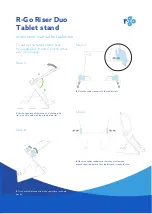
6/10/13 – 11
7
Limb-Walking with the Rope Wrench
Anchor.
The climbing rope must be tied to a secure
anchor point or Tie in Point (TIP).
Redirects.
From the TIP, the rope may pass through
redirects as the climber works the tree. Unlike a
Doubled Rope Technique (DdRT) climbing system,
the Rope Wrench climbing system allows consistent
friction regardless of the number of redirects the
climber uses. Refer to
Figure 7
below for an
example of a redirect.
Selecting Redirect Points.
To limit the exposure to
dangerous swings, take advantage of natural
redirects in the tree. Select redirects with caution
and care. Constantly inspect the tree for spots of
decay and test the redirect before trusting you full
weight to it. Remember, trees are not rated. Being
able to judge the health and strength of trees as well
as understanding the physics of fundamental tree
rigging are imperative to being a safe climber.
WARNING: STAY BELOW REDIRECTS
Always stay below the last redirect. Failure to do so can
lead to dynamic falls and uncontrolled swings resulting
in serious injury or death.
Forces
. Understand that forces can be multiplied on
redirects depending on the angle of the rope.
Understand that a redirect that is strong in one
direction may be weak in a different direction.
Figure 7. A climber properly utilizing the Rope Wrench System, PPE, and climbing technique.
Redirect





























